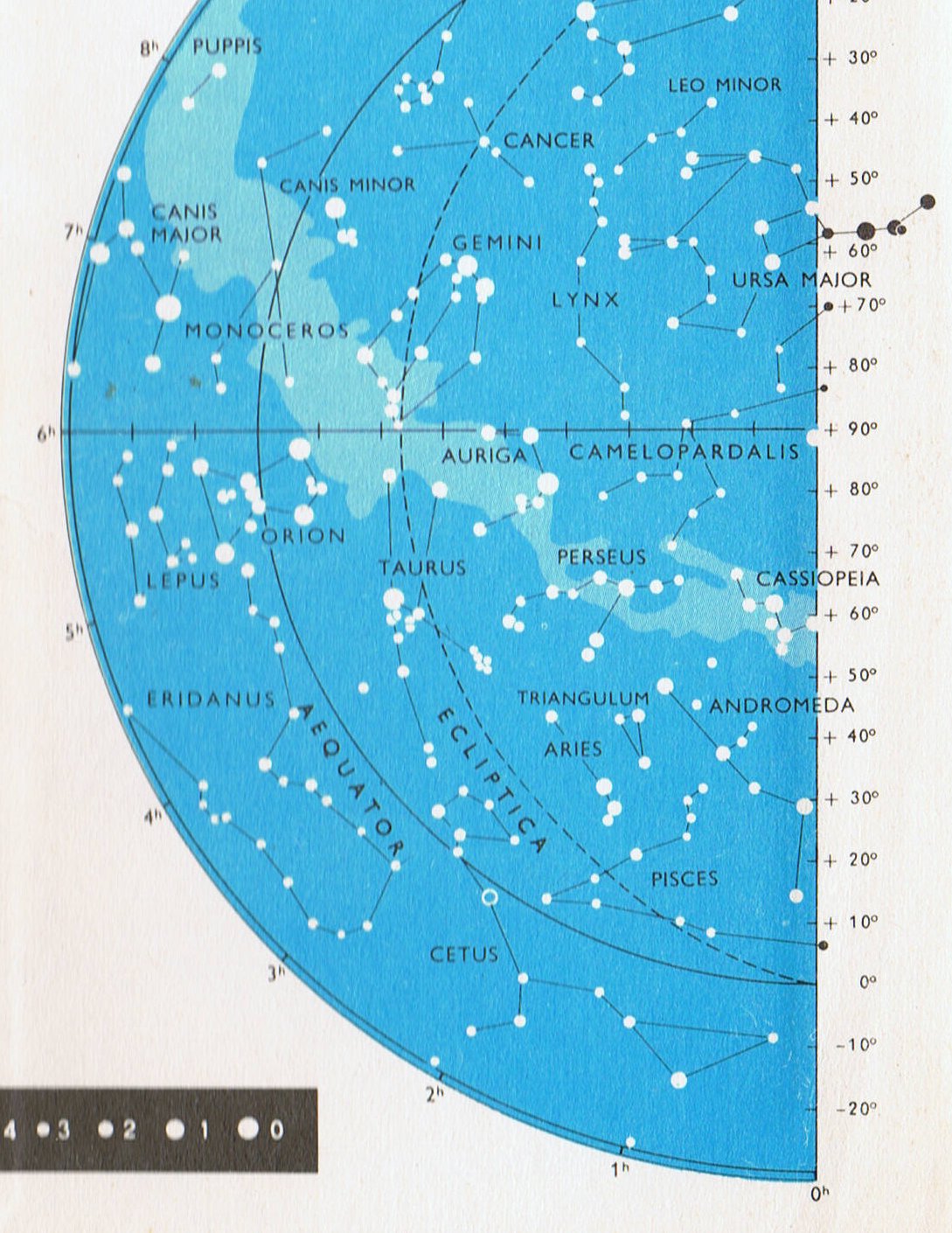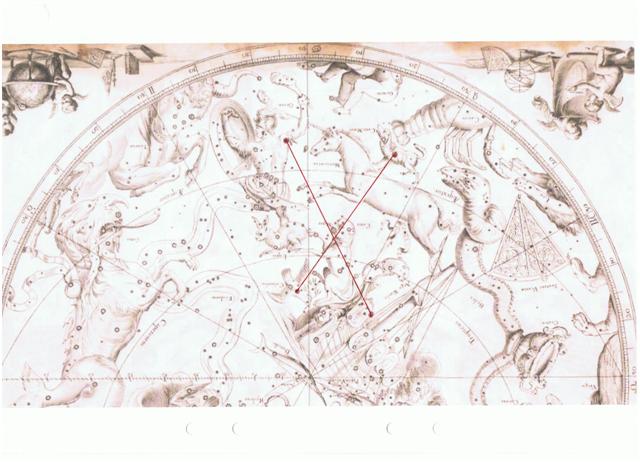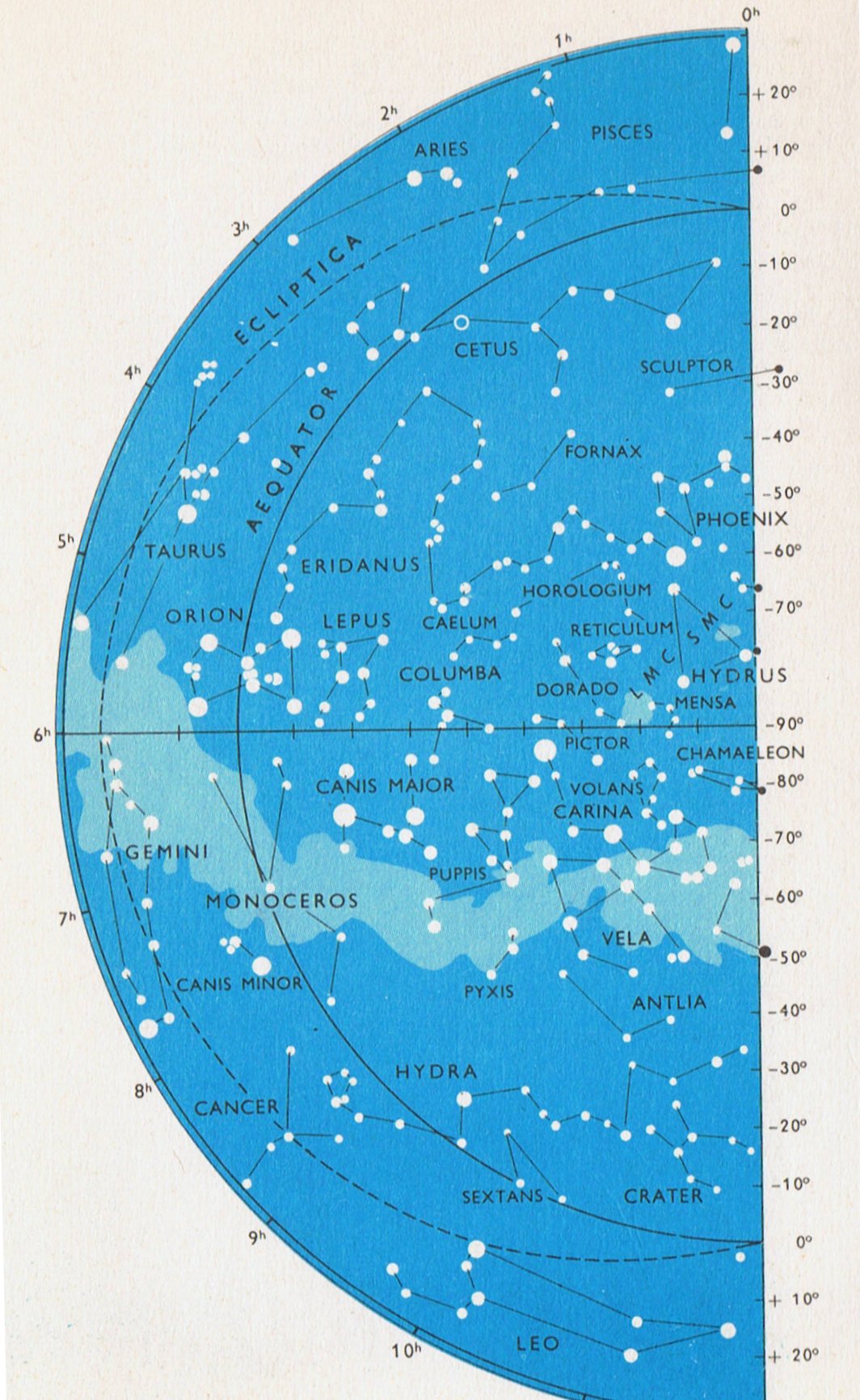The
pregnant
rising
fish
in
Ga3-4
is
no
more
than
an
allusion
to
vaha
mea,
because
there
is
no
open
mouth.
In
Roman
times
this
was
day
100
after
0h
and
the
day
before
Sirius
rose
with
the
Sun
in
'June
30.
 |
 |
 |
 |
| Ga2-27 |
Ga2-28 |
Ga2-29 |
Ga3-1 (60) |
| MAY 17 (364 - 227 = 137) |
18 (228 - 90 = 138) |
19 |
20 |
| 8h (121.7) |
ρ Puppis (122.0), Heap of Fuel (122.1), ζ Monocerotis (122.3), ψ Cancri (122.6), Regor (122.7) |
Tegmine (123.3) |
Al Tarf (124.3)
Ras Algethi
|
| χ Gemini (121.0), Naos (121.3) |
| July 20 (201) |
21 (*122) |
7-22 |
23 |
| ºJuly 16 (181 + 16) |
17 (*118) |
18 |
19 (200) |
| 'June 23 |
ST JOHN'S EVE |
25 (*96) |
26 (177) |
| "June 9 (*80) |
10 |
11 |
12 (163) |
| NAKSHATRA DATES: |
| NOVEMBER 16 (320) |
17 |
18 (*242) |
19 |
| 20h (304.4) |
Shang Wei (305.2), θ Sagittae (305.4), Tseen Foo (305.6), ξ Capricorni (305.8) |
Tso Ke (306.3) |
Gredi (307.2), σ Capricorni (307.5), Alshat (307.9) |
| η Sagittae (304.2), δ Pavonis (304.4) |
| January 19 (384) |
20 |
21 |
22 |
| ºJanuary 15 (*300) |
16 |
17 |
1-18 (383) |
| 'December 23 |
CHRISTMAS EVE |
25 (*279) |
26 (360) |
| 'December 9 |
10 |
11 (*265) |
12 (346) |
 |
 |
 |
 |
| Ga3-2 |
Ga3-3 |
Ga3-4 |
Ga3-5 (64) |
| MAY 21 |
22 |
23 (*63) |
24 (144) |
| χ Cancri (125.2), Bright Fire (125.4) |
Avior (126.4), φ Cancri (126.8) |
ο Ursa Majoris (127.4) |
Pushya-8 |
| υ Cancri (128.1), θ CANCRI (128.2), η Cancri (128.5) |
| July 24 |
25 |
26 |
27 (80 + 2 * 64) |
| ºJuly 20 (201) |
21 (*122) |
22 (7-22) |
23 |
| 'June 27 |
28 |
29 (*100) |
30 (181) |
| "June 13 (164) |
14 |
15 (*86) |
16 |
| NAKSHATRA DATES: |
| NOVEMBER 20 |
21 |
22 (*246) |
23 (327) |
| Al Sa’d al Dhabih-20 / Ox / Herd Boy-9 |
Okul (309.6), Bos (309.9)
Arneb
|
ο Capricorni (310.2), θ Cephei (310.5) Alnilam
|
Rotten Melon, φ Pavonis (311.2), η Delphini (311.4), ζ Delphini, ρ Pavonis (311.7) Phakt
|
| DABIH (308.0), κ Sagittarii (308.1), Sadir (308.4), Peacock (308.7) |
| January 23 (388) |
24 |
25 |
26 |
| ºJanuary 19 (384) |
20 (*305) |
21 |
22 |
| 'December 27 |
28 |
29 |
30 (364) |
| "December 13 |
14 (348) |
15 |
16 (*270) |
Instead
of an
aperture
there
was the
opposite,
viz. a
seal -
a
quite different
(ke)
'thing'
(mea):

| Ke 1. Other; different; different being; hare ké, a different house; e-ké-ro-á... e-ké-ro-á... there are some who... and others who...; me'e ké, something distinct, different: te puaka ina oona kuhane; me'e ké te tagata, he hakari oona, he kuhane, an animal has no soul; man is different, he has a body, and a soul; matu'a ké, the other relatives. 2. Ké te kairua, person who turns up for meals at other people's homes. 3. Used in exclamations: hahau ké! what a cool breeze!; hana ké! how hot! takeo ké! how cold! Vanaga.
Other, distinct, different, diverse, otherwise; koona ke, elsewhere; tagata ke, some one else; mea ke, contrary, distinct, otherwise; hakake, feint, stratagem, to feign; hagake, to act contrary. T Pau.: ke, different. Mgv.: ke, another, other, else, different, of partial comparative value. Mq.: ke, é, to be different, changed, no longer the same. Ta.: e, different, strange, other. Churchill. |
Possibly
we
should
translate
this
'pregnant
fish'
with
Faka-taka
(making
a
cycle):
...
There
is a
couple
residing
in
one
place
named
Kui
and
Fakataka.
After
the
couple
stay
together
for
a
while
Fakataka
is
pregnant.
So
they
go
away
because
they
wish
to
go
to
another
place
-
they
go.
The
canoe
goes
and
goes,
the
wind
roars,
the
sea
churns,
the
canoe
sinks.
Kui
expires
while
Fakataka
swims.
Fakataka
swims
and
swims,
reaching
another
land.
She
goes
there
and
stays
on
the
upraised
reef
in
the
freshwater
pools
on
the
reef,
and
there
delivers
her
child,
a
boy
child.
She
gives
him
the
name
Taetagaloa.
When
the
baby
is
born
a
golden
plover
flies
over
and
alights
upon
the
reef.
(Kua
fanau
lā
te
pepe
kae
lele
mai
te
tuli
oi
tū
mai
i te
papa)
...
In
Roman
times
the
beginning
of
'July
was
a
time
of
importance
because
here the
Sun
was
in
Cancer
- it
was
a
time
of
rebirth.
In
Babylonian
times
this
was
where
the
Southeastern
Star
in
the
Crab
(δ
Cancri,
Ascellus
Australis,
the
Southern
Donkey)
rose
heliacally:
 |
 |
 |
 |
| Ga3-6 |
Ga3-7 |
Ga3-8 |
Ga3-9 (68) |
| MAY 25 |
26 |
27 |
28 (148) |
| Āshleshā-9 / Willow-24 |
Al Nathrah-6 |
Extended Net-26a / Arkū-sha-nangaru-sha-shūtu-13 |
ι Cancri (132.0), ρ Hydrae (132.4) |
| π¹ Ursa Majoris, δ HYDRAE (129.6), Al Minhar al Shujā, Museida (129.9) |
BEEHIVE and M44 (130.4), Xestus (130.5), Ascellus Borealis (130.9) |
η Hydrae (131.0), Ascellus Australis (131.4), Koo She (131.6), ε HYDRAE (131.9) |
| July 28 |
29 |
30 |
31 (212) |
| ºJuly 24 |
25 |
26 (*127) |
27 (208) |
| 'July 1 |
2 |
3 (*104) |
4 (185) |
| "June 17 |
18 |
19 (*90) |
20 (181) |
| NAKSHATRA DATES: |
| NOVEMBER 24 |
25 (329) |
26 (*250) |
27 |
| Rotanev, ι Delphini (312.3), τ Capricorni (312.6), κ Delphini (312.7), SVALOCIN, υ Capricorni, υ Pavonis (312.8) |
μ², μ¹ Oct. (313.2), Deneb Cygni (313.5), β Pavonis (313.6), δ Delphini (313.8) |
Al Sa’d al Bula'-21 / Dhanishta-24 / Girl-10 |
Baten Algiedi (315.8) |
| Yue (314.3), Gienah Cygni, η Cephei (314.5), γ Delphini (314.6), σ Pavonis (314.7), ALBALI (314.8)
Betelgeuze
|
| January 27 (392) |
28 |
29 (*314) |
30 |
| ºJanuary 23 |
24 |
25 (*310) |
26 |
| 'December 31 |
'January 1 |
2 |
3 (*288) |
| "December 17 |
18 |
19 (*273) |
20 (354) |
... Men's spirits were thought to dwell in the Milky Way between incarnations. This conception has been handed down as an Orphic and Pythagorean tradition fitting into the frame of the migration of the soul. Macrobius, who has provided the broadest report on the matter, has it that souls ascend by way of Capricorn, and then, in order to be reborn, descend again through the 'Gate of Cancer'. Macrobius talks of signs; the constellations rising at the solstices in his time (and still in ours) were Gemini and Sagittarius: the 'Gate of Cancer' means Gemini. In fact, he states explicitly (I,12.5) that this 'Gate' is 'where the Zodiac and the Milky Way intersect' ...

At the other end of this 'Gate' was, I think, the 'sunken ship' Argo Navis. Naos (ζ Puppis) means 'Ship' and Naos was in the Egyptian X at the bottom of the line from Betelgeuze past the nose at Sirius:

... The hull of the canoe was regarded as the backbone of their chief. In laments for dead chiefs, the deceased are often compared to broken canoes awash in the surf ...

The Golden Plover may have represented the descending spirit of Old Sun who should be inhaled by the first breath taken by the new Sun (his son) 'not-Tagaroa' (Tae-tagaloa).

... the modern Homo occidentalis is bound to shrink back from the
mere idea that the Nile [the Milky Way] represented a circle, where 'source' and 'mouth'
meet, so that there is nothing preposterous in the notion that a Canopic
mouth can be found in the geographical North
...
|












